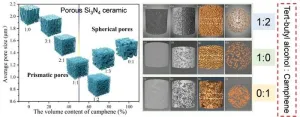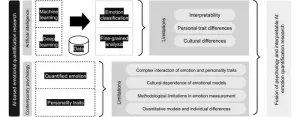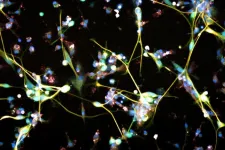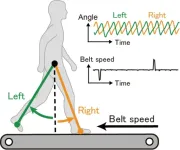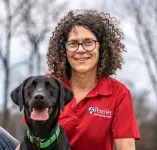(Press-News.org) (WASHINGTON, September 20, 2024) –The incidence of stroke continues to increase for adults and children living with sickle cell disease (SCD) despite the Stroke Prevention Trial in Sickle Cell Anemia (STOP) establishing standards of care like transfusions and tests to measure blood flow in the brain for those deemed high-risk, according to a study published today in Blood.
Individuals living with SCD, the most common inherited red blood cell disorder in the United States, are especially susceptible to cerebrovascular events (CVEs). This includes ischemic or hemorrhagic strokes, when a blood vessel leading to the brain is either blocked by a blood clot or bursts, and transient ischemic attacks (TIAs), when a blood clot temporarily blocks a blood vessel leading to the brain but does not cause long-term damage.
STOP, a landmark clinical trial published in 1998, demonstrated that chronic red blood cell transfusions effectively decreased the incidence of cerebrovascular events (CVEs) – such as strokes – in high-risk children with SCD identified by abnormal blood flow as measured by a Transcranial Doppler (TCD) testing, a type of brain ultrasound.
In a real-world, population-based study, Dr. Wun and his team found that the risk of stroke increased with age, doubling for every 20 years of age.
“As hematologists, our training emphasizes that the risk of stroke is highest in young children, but I think that has resulted in far less attention being paid to adult patients,” said Ted Wun, MD, associate dean for clinical and translational research at the University of California Davis School of Medicine and study senior author. “There’s very little data on [stroke in adults living with SCD], so we just extrapolate what happens in children to adults, but we don’t know if that’s appropriate or not – if the TCD value cutoffs in children can apply to adults, if TCD works in adult patients and we just don’t do it.”
The researchers used data from California’s Emergency Department Utilization (2005 – 2019) and Patient Discharge Data hospitalization (1991 – 2019) databases to identify 7,636 patients with a diagnosis of SCD. Of these patients, 733 (9.6%) had experienced at least one CVE, defined as an ischemic stroke, hemorrhagic stroke, or TIA, with prevalences of 451 (5.9%), 227 (3%), and 205 (2.7%), respectively. CVEs were more common in women and patients hospitalized three or more times per year.
The cumulative incidence of hemorrhagic stroke increased 13-fold from age 20 to age 60. Additionally, despite a two-year decline in CVEs following the publication of the STOP study, the highest rates of all CVEs occurred across all age groups in the most recent decade, 2010 – 2019.
“Even in children, who probably get the best care for patients with SCD in this country, these trends are opposite what we would hope,” said Dr. Wun. “Based on these results, it appears that STOP guidelines haven’t been effectively implemented.”
Dr. Wun and his team hypothesized that the increase in strokes post-STOP could be due to decreasing adherence to the TCD screening guidelines, improved technology to diagnose ischemic strokes, low rates of blood transfusion therapy, or low usage of hydroxyurea, a drug commonly used to decrease the likelihood of blood cells developing a sickle shape. The researchers also looked at modifiable risk factors for stroke and found that factors increasing risk of ischemic stroke included frequent hospitalization, high blood pressure, high cholesterol, and a prior TIA. However, patients exhibiting risk factors such as acute chest syndrome, liver failure, and prior ischemic stroke were more likely to suffer a hemorrhagic stroke.
These updated data on modifiable risk factors of stroke “emphasize the need to pay attention to screenings for high cholesterol, high blood pressure, and other risk factors in adults,” said Olubusola Oluwole, MD, assistant professor at the University of Pittsburgh and study first author.
“The preventive steps that we know help prevent stroke in the general population are just as important for people living with SCD,” added Dr. Wun, especially as people with SCD live longer and their risk of stroke increases.
The study had several limitations, including a lack of reliable data on tobacco use, which increases the risk of stroke, and SCD genotype. Additionally, the authors did not have access to imaging reports and could not radiographically confirm a stroke diagnosis. Furthermore, the rate of CVEs in patients in California may be underestimated if patients had a stroke outside of the state, died of stroke prior to hospitalization, or if TIA symptoms were managed at home.
The researchers hope this study will stimulate more interventional and prospective studies on stroke and SCD in adults.
###
Blood (www.bloodjournal.org), the most cited peer-reviewed publication in the field of hematology, is available weekly in print and online. Blood is a journal of the American Society of Hematology (ASH) (www.hematology.org).
Claire Whetzel, 202-629-5085
cwhetzel@hematology.org
END
Radomes and wave-transmitting antenna windows are critical structural components in aircraft, protecting radar antennas from external interference while ensuring reliable communication. Currently, the most widely used wave-transmitting materials are ceramics based on oxides and nitrides. Si3N4 ceramics, with their high melting point and superior mechanical properties, are considered promising candidates for hypersonic vehicle applications. However, the dielectric and thermal insulation properties of dense Si3N4 ceramics need improvement to meet the precise guidance and thermal protection demands of high-speed flight. By adjusting the microstructure, it is possible to enhance the ...
A joint research team from the Renewable Energy System Laboratory and the Energy ICT Research Department at the Korea Institute of Energy Research (KIER) has developed key technologies to realize "Urban Electrification" using artificial intelligence (AI).
Urban electrification aims to reduce the use of fossil fuels and introduce renewable energy sources, such as building-integrated solar technology, to transform urban energy systems. While this concept is relatively unfamiliar in the Republic of Korea, it is being promoted as a key strategy in the U.S. and Europe for achieving carbon neutrality and creating sustainable urban environments.
In ...
Using a fusion of traditional and novel technological methods, researchers are hoping to better quantify emotions to transform the face of the emotion quantification field
Human emotions are complex and are not always easily able to be boiled down to a recognizable pattern. Determining one’s emotional state can be difficult human-to-human, and the many nuances of existence as an emotional entity seem impossible to train a non-human entity to understand, identify and learn from. However, a considerable amount of work and research has been put into training artificial intelligence (AI) to observe, quantify and recognize various states of emotion in humans. ...
Key points:
Glioblastoma is an incurable and fatal type of brain cancer.
In a large-scale drug screening, the antidepressant, vortioxetine emerged as one of the most effective agents against these types of cancer cells.
Clinical trials are already in the planning phase at the University Hospital Zurich.
Glioblastoma is a particularly aggressive brain tumour that at present is incurable. Cancer doctors can extend patients’ life expectancy through operations, radiation, chemotherapy or surgical interventions. Nevertheless, half of patients die within twelve months of diagnosis.
Drugs that are effective against brain tumours are ...
The European Union aims to be carbon-neutral by 2050 as part of the comprehensive Green Deal that was agreed upon four years ago. However, an analysis of the policy documents outlining the practical measures of the Green Deal shows that it will decrease carbon emissions in Europe, but also increase carbon emissions outside of the EU. This increase is more than double the amount of carbon emissions saved by the Green Deal. This analysis was published in Nature Sustainability on <DATE> by an international team of scientists led by Klaus Hubacek, Professor of Science, Technology and Society ...
Osaka, Japan – Walking is an activity that is often taken for granted. Most people usually think they can multitask by “walking and chewing gum” simultaneously with hardly any taxation of their mental effort. Indeed, each leg can move rhythmically independently of the other, controlled by its side of the spinal cord. However, the ability of the human brain to coordinate the gait so that a walker’s legs are half a stride out of phase with each other, called the “antiphase relationship,” is not so trivial when an obstacle or asymmetry occurs, such as a curve in the path. A better understanding of how a normal walking cadence is maintained ...
A new type of blood test using lipids could make it easier to identify children at risk of complications around obesity including type two diabetes, liver and heart disease, say scientists.
A new study from King’s College London published in Nature Medicine reveals a new relationship between lipids and diseases impacting metabolism in children, which could serve as an early warning system for conditions like liver disease.
Using machines that test blood plasma in babies that already exist in hospitals, the researchers suggest this ...
Iron is a micronutrient indispensable for life, enabling processes such as respiration, photosynthesis, and DNA synthesis. Iron availability is often a limiting resource in today’s oceans, which means that increasing the flow of iron into them can increase the amount of carbon fixed by phytoplankton, with consequences for the global climate.
Iron ends up in oceans and terrestrial ecosystems through rivers, melting glaciers, hydrothermal activity, and especially wind. But not all its chemical forms are ‘bioreactive’, that is, available for organisms ...
As society learns to live with COVID-19, research on the disease and its complications remains important. Thus, an Osaka Metropolitan University team has pored through data to understand the incidence in Japan of COVID-19-associated pulmonary aspergillosis (CAPA), a severe invasive fungal infection of the lungs.
Few studies have been conducted on CAPA in Japan, but reports from overseas put the incidence between 3.8% and 35%.
Using Japanese administrative claims data, Graduate School of Medicine Lecturer Waki Imoto, graduate student Mr. Yasutaka Ihara, Professor Ayumi Shintani, ...
FOR MORE INFORMATION
Michael San Filippo
Senior Media Relations Manager
American Veterinary Medical Association
Cell/Text: 847-732-6194
msanfilippo@avma.org
Cooler heads prevail: New research reveals best way to prevent dogs from overheating
(SCHAUMBURG, Illinois) September 19, 2024— As temperatures continue to soar across the country, a simple yet innovative technique could be the key to keeping dogs safe from heat-related illnesses.
New research published in the Journal of the American Veterinary Medical Association (JAVMA) reveals that teaching dogs ...
